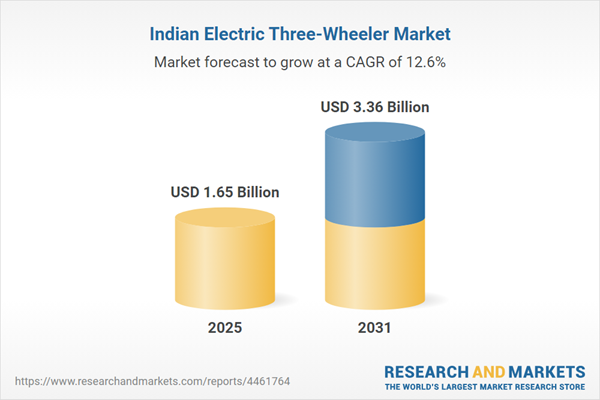Speak directly to the analyst to clarify any post sales queries you may have.
10% Free customizationThis report comes with 10% free customization, enabling you to add data that meets your specific business needs.
Key Market Drivers
Rising Fuel Costs
Persistently high fuel prices are a major factor encouraging the transition from internal combustion engine vehicles to electric alternatives. For commercial users such as rickshaw operators and last-mile delivery providers, fuel represents a substantial share of daily expenses. The lower operating cost of electric three-wheelers - enabled by reduced per-kilometer energy usage and simpler maintenance - offers significant long-term financial benefits. Electricity subsidies in certain regions further enhance savings and make cost forecasting more predictable. This economic rationale is driving increased adoption, especially among budget-conscious user segments. Word-of-mouth endorsements and peer influence among operators are also helping spread awareness and accelerating EV adoption in urban and semi-urban pockets.Key Market Challenges
High Upfront Costs
Despite their lower operational costs, electric three-wheelers remain financially out of reach for many due to their high initial purchase price. Lithium-ion batteries, which make up a large portion of the vehicle’s cost, contribute to the pricing gap between electric and conventional models. Limited access to favorable financing and credit options adds to the challenge, particularly for informal sector workers and small businesses. Traditional lending institutions often hesitate to finance these vehicles due to concerns over resale value and battery depreciation. Even with subsidies, the perceived affordability barrier remains significant, delaying large-scale adoption. Without innovative financing models, leasing options, or better credit access, many prospective buyers may continue to prefer ICE vehicles.Key Market Trends
Shift Toward Lithium-Ion Batteries
The adoption of lithium-ion battery technology is gaining momentum across India’s electric three-wheeler segment. These batteries offer higher energy density, faster charging capabilities, extended life cycles, and lower maintenance compared to lead-acid counterparts. They are increasingly preferred by commercial users who require reliable performance and minimal vehicle downtime. As domestic battery production scales up and technological innovations reduce costs, lithium-ion solutions are becoming more accessible to buyers. Manufacturers are equipping vehicles with intelligent battery management systems (BMS) that ensure safety, optimize performance, and extend battery life. This trend is influencing product design and boosting overall efficiency, leading to better vehicle durability and operational value.Key Market Players
- Atul Motors Private Limited
- Euler Motors Private Limited
- Kinetic Green Energy & Power Solutions Ltd
- Lohia Auto Industries Limited
- Mahindra Electric Mobility Limited
- Omega Seiki Mobility Private Limited
- Piaggio Vehicles Pvt. Ltd
- Saera Electric Auto Pvt. Ltd
- Terra Motors India Private Limited
- Vani Electric Vehicles Pvt. Ltd.
Report Scope:
In this report, the India Electric Three-Wheeler Market has been segmented into the following categories, in addition to the industry trends which have also been detailed below:India Electric Three-Wheeler Market, By Vehicle Type:
- Passenger Carrier
- Load Carrier
India Electric Three-Wheeler Market, By Battery Capacity:
- < 101Ah
- >101Ah
India Electric Three-Wheeler Market, By Type:
- Lead Acid
- Li-ion
India Electric Three-Wheeler Market, By Region:
- East India
- West India
- North India
- South India
Competitive Landscape
Company Profiles: Detailed analysis of the major companies present in the India Electric Three-Wheeler Market.Available Customizations:
India Electric Three-Wheeler Market report with the given market data, TechSci Research, offers customizations according to the company’s specific needs. The following customization options are available for the report.Company Information
- Detailed analysis and profiling of additional market players (up to five).
This product will be delivered within 1-3 business days.
Table of Contents
Companies Mentioned
- Atul Motors Private Limited
- Euler Motors Private Limited
- Kinetic Green Energy & Power Solutions Ltd
- Lohia Auto Industries Limited
- Mahindra Electric Mobility Limited
- Omega Seiki Mobility Private Limited
- Piaggio Vehicles Pvt. Ltd
- Saera Electric Auto Pvt. Ltd
- Terra Motors India Private Limited
- Vani Electric Vehicles Pvt. Ltd.
Table Information
| Report Attribute | Details |
|---|---|
| No. of Pages | 85 |
| Published | July 2025 |
| Forecast Period | 2025 - 2031 |
| Estimated Market Value ( USD | $ 1.65 Billion |
| Forecasted Market Value ( USD | $ 3.36 Billion |
| Compound Annual Growth Rate | 12.6% |
| Regions Covered | India |
| No. of Companies Mentioned | 10 |









